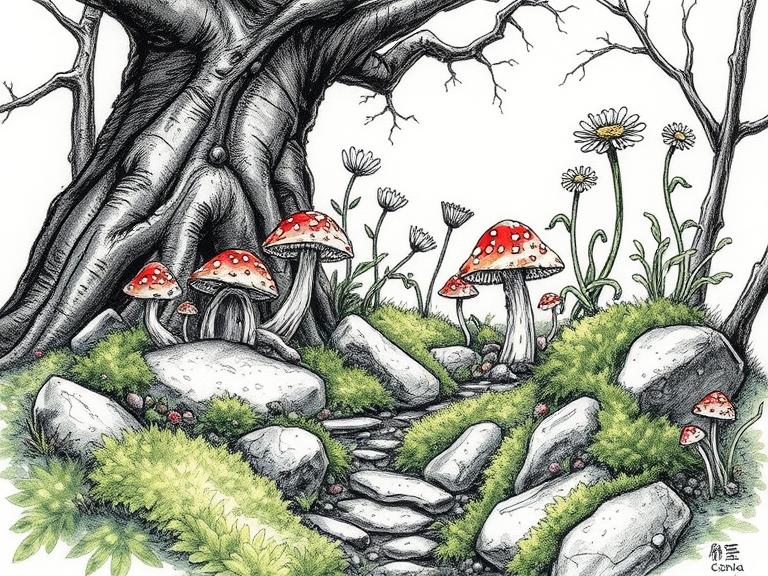You know that moment when you walk into someone’s garden and suddenly feel like you’ve stepped into a living painting?
That happened to me last spring at my neighbor’s place, and I stood there with my coffee getting cold, mentally cataloging every single detail I wanted to capture on paper.
Now my sketchbook is bursting with garden sketch drawing adventures, and honestly, I never knew dirt and petals could be this inspiring until I started really paying attention to the magic happening right outside my door.
The Therapeutic Power of Garden Art
There’s something deeply grounding about combining two of nature’s most calming activities – gardening and drawing. When you sit quietly in a garden with your sketchbook, you’re not just creating art; you’re participating in a form of moving meditation that connects you to seasonal rhythms and natural cycles.
Research shows that both gardening and artistic practice reduce cortisol levels, which means garden sketch drawing sessions offer double the stress-relief benefits.
What makes garden drawing ideas so universally appealing is their accessibility. Kids love sketching the obvious stuff – big sunflowers, colorful butterflies, maybe a rabbit if they’re lucky.
But adult artists discover layers of complexity in seemingly simple subjects: the way morning light filters through leaves, how shadows shift throughout the day, or the intricate patterns hidden in bark texture. Every garden offers countless illustration opportunities, regardless of size or style.
Secret Garden Sanctuaries
Creating Your Own Fairy Tale Corner
Fairy garden sketch projects transport you into miniature worlds where imagination runs wild and scale becomes playfully flexible.
These tiny landscapes pack enormous creative potential into compact spaces – think moss-covered stones that become mountains, small flowers that tower like trees, and garden tools that transform into fairy furniture.

The beauty of fairy garden sketch work lies in how it encourages you to see ordinary garden elements through fantasy-tinted glasses.
Hidden Nooks and Secret Paths
Every garden has those special corners that feel separate from the everyday world – maybe it’s where the old apple tree creates natural shade, or that spot behind the shed where wildflowers have taken over.
These hidden sanctuaries make perfect subjects for garden ideas drawing because they capture the mystery and discovery that make gardens so enchanting.
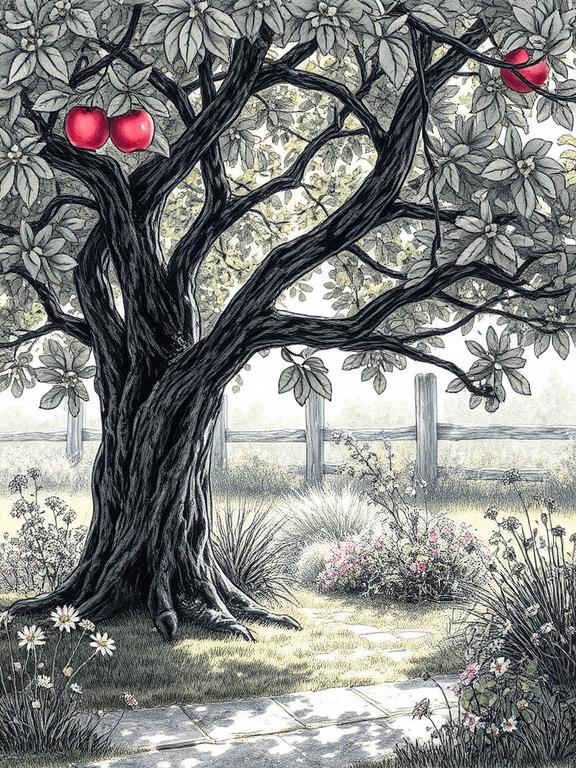
Water Features That Reflect Beauty
Pond Life in Graphite
Pond sketch pencil drawings offer some of the most dynamic subjects available in garden art. Water surfaces create natural mirrors that double your compositional elements, while the constantly changing reflections challenge you to capture movement and light in static medium.
Ponds also attract wildlife – dragonflies, birds, maybe even the occasional frog – adding life and energy to your sketch work.
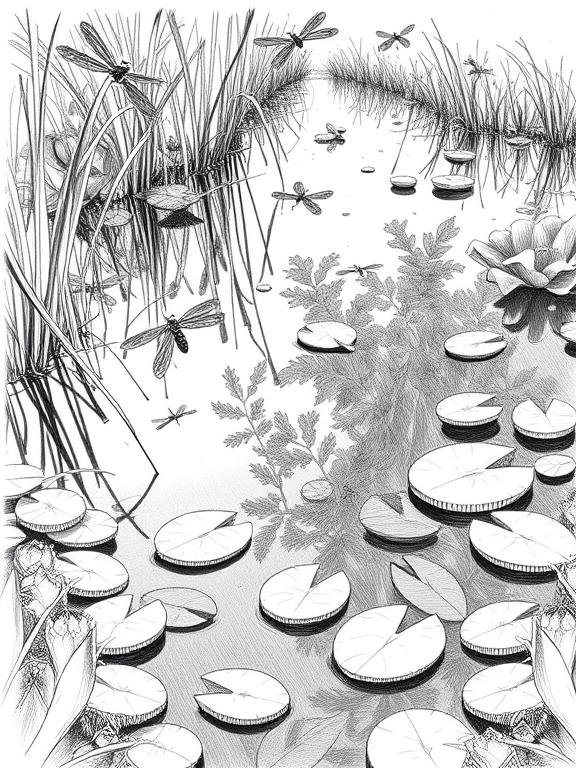
Garden Fountains and Water Movement
Moving water presents unique drawing challenges that push artistic skills in exciting directions. Whether it’s a formal fountain or a simple birdbath, water features add sound, movement, and light-catching opportunities to garden scenes.
The key to successful water illustration is understanding that you’re not drawing water itself – you’re drawing the effects of light on water.
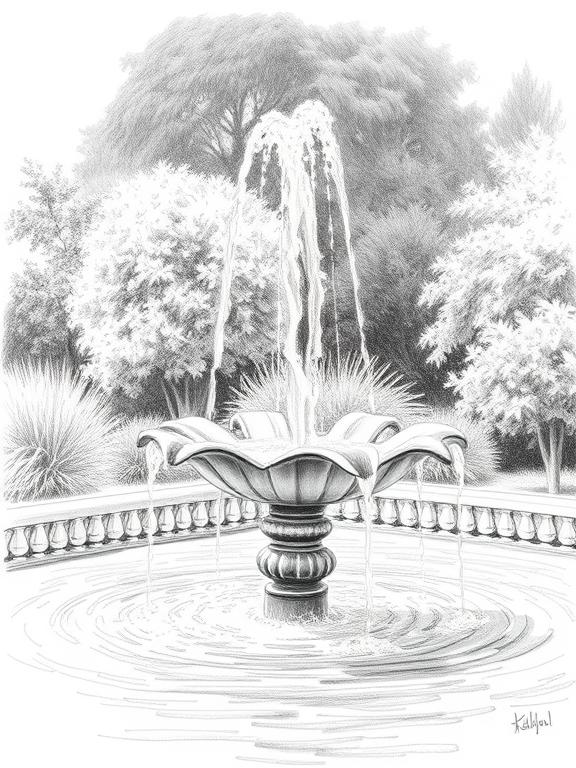
Botanical Studies That Bloom on Paper
Botanical Garden Drawing Expeditions
Formal botanical garden drawing sessions offer structured learning opportunities that combine scientific accuracy with artistic expression.
These carefully curated landscapes provide perfect specimens for plant studies – you can spend hours with a single rose, documenting everything from petal structure to the way stems connect to branches.
Botanical garden drawing teaches patience and precision while surrounded by inspiring natural beauty.
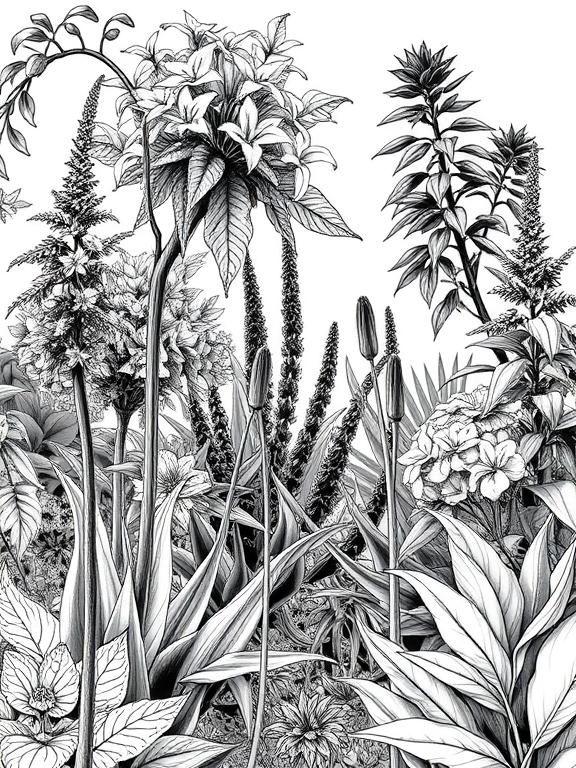
Native Plant Portraits
Focusing on plants native to your region creates meaningful connections between your art and local environment. These studies become documentation of your specific place and time, capturing seasonal changes and natural adaptation patterns.
Native plant drawing also supports conservation awareness by highlighting the beauty and importance of indigenous species.
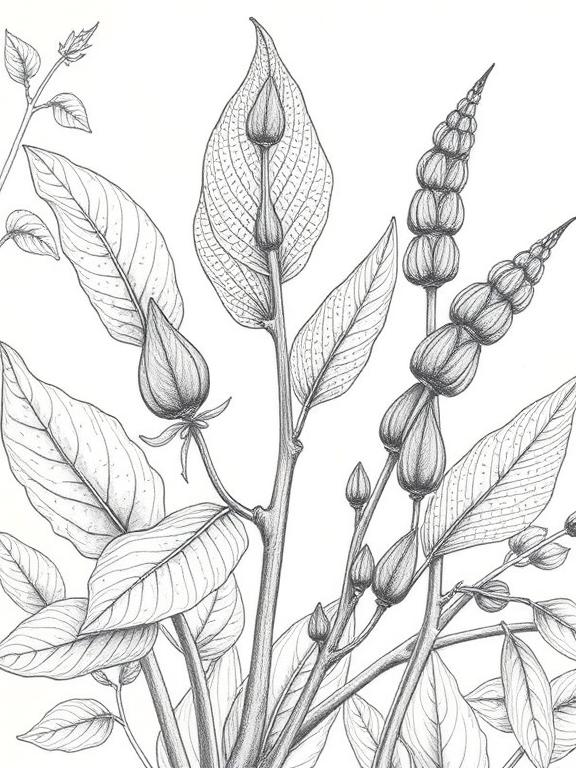
Backyard Adventures in Everyday Spaces
Backyard Drawing Sketch Discoveries
Your own backyard drawing sketch opportunities are literally right outside your door, which makes them perfect for developing consistent practice habits.
That vegetable patch you see every day actually changes dramatically throughout growing seasons – what starts as neat rows of seedlings transforms into jungle-like abundance by midsummer.
These familiar spaces offer comfort and accessibility while providing endless variation.
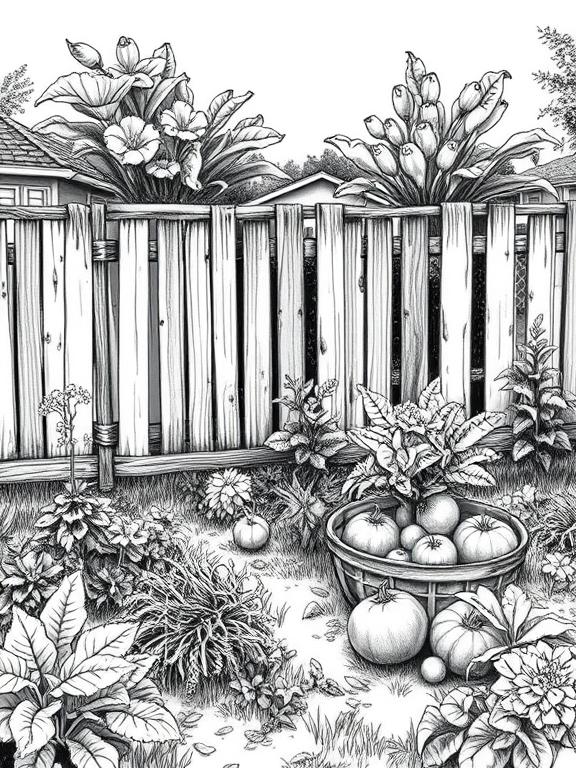
Seasonal Transformation Studies
Gardens offer built-in motivation for returning to the same subjects throughout the year. That bare tree in winter becomes a study in branch structure and negative space. Spring brings delicate buds and fresh green growth.
Summer explodes with color and abundance, while fall offers dramatic color changes and interesting seed pod formations. This cyclical approach to garden sketch drawing creates natural series work that documents time’s passage.
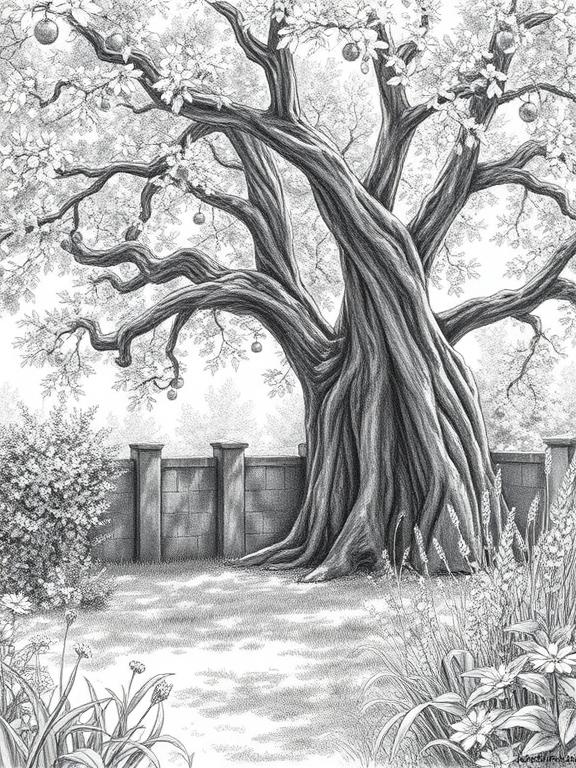
Architectural Elements That Frame Nature
Park Bench Sketch Stories
Park bench sketch subjects combine architectural elements with natural settings, creating compositions that suggest human presence without requiring figure drawing skills.
Benches tell stories – who sits here? What do they watch? How does this spot change throughout the day? These narrative possibilities make park bench sketch work emotionally engaging beyond simple observational practice.
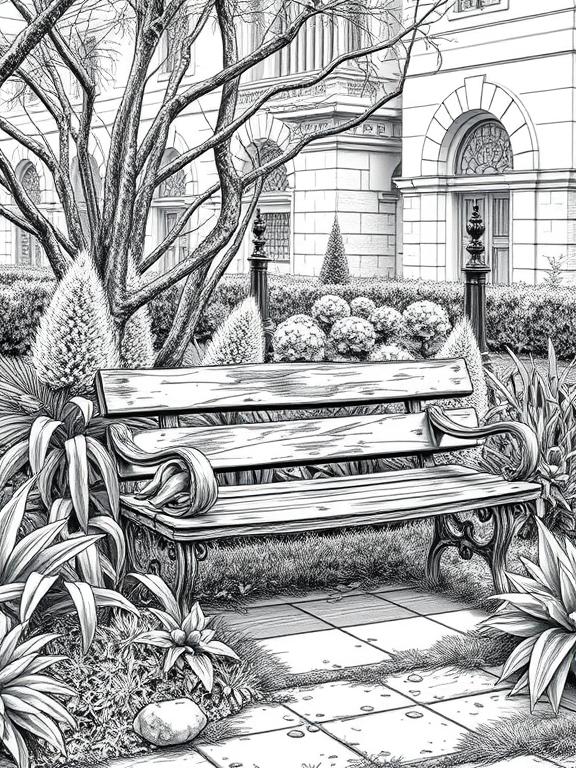
The weathering patterns on outdoor furniture provide excellent texture practice. Paint peeling from metal, wood grain emerging through worn stain, moss growing in shadowed corners – these details add character and history to your illustration work.
Park bench sketch studies also teach lessons about how human-made objects age and integrate into natural environments.
Gates, Arbors, and Architectural Details
Garden architecture frames and defines outdoor spaces while providing strong compositional elements for drawing work. An ornate iron gate creates dramatic shadows and intricate pattern opportunities.
A simple wooden arbor covered in climbing vines combines geometric structure with organic growth. These architectural elements add vertical interest and depth to garden scenes.

Pathways That Lead the Eye
Garden Path Drawing Adventures
Garden path drawing compositions use linear perspective principles while maintaining organic, natural feeling. Whether it’s a formal brick walkway or an informal dirt trail, paths create natural leading lines that guide viewer attention through your art.
The key to successful garden path drawing is understanding how paths interact with surrounding plantings and architectural elements.
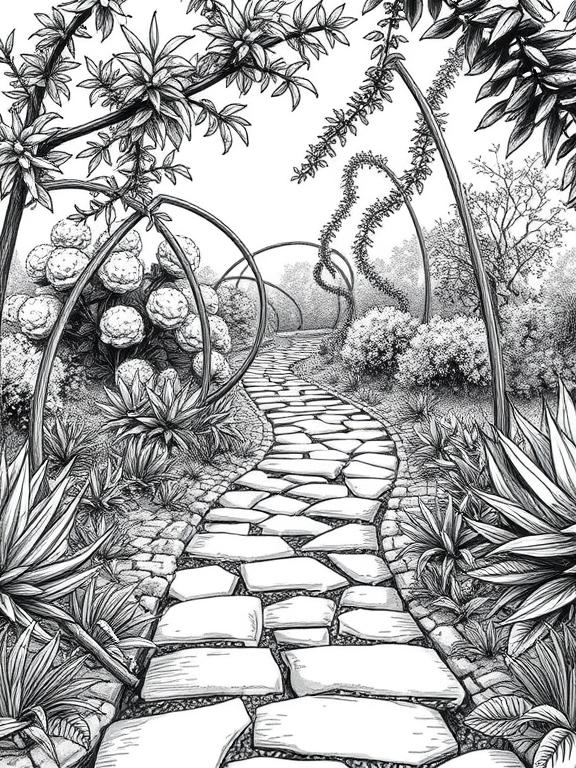
Stepping Stones and Natural Passages
Informal pathways created by stepping stones or natural materials offer different compositional opportunities than formal walkways.
These paths feel more integrated into natural surroundings, creating organic flow patterns that challenge artists to balance structure with spontaneity. The irregular spacing and natural materials provide interesting texture and proportion studies.

Whimsical Garden Magic
Whimsical Garden Drawing That Sparks Joy
Whimsical garden drawing celebrates the playful, unexpected elements that make gardens feel magical rather than merely functional.
Maybe it’s the garden gnome hiding behind the hostas, or the way morning glory vines have completely taken over the mailbox, or those mushrooms that pop up overnight like nature’s own fairy rings. These quirky details transform ordinary garden sketch work into storytelling art.
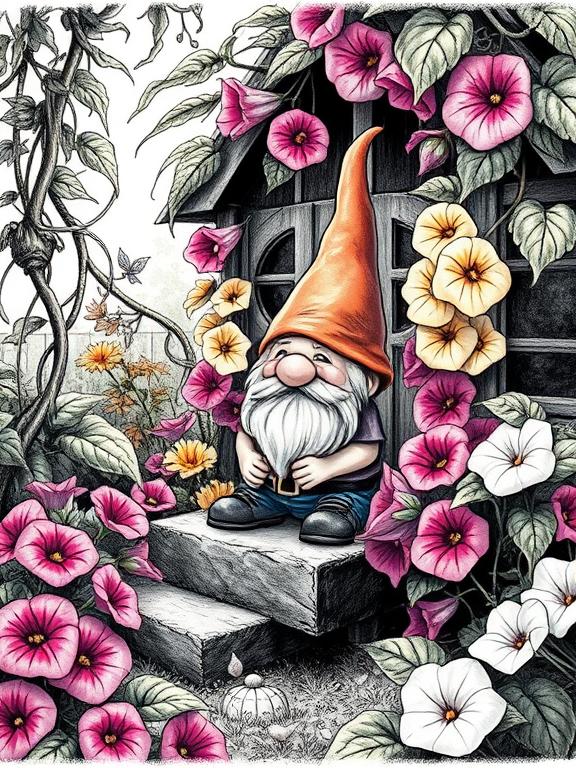
Garden Ornaments and Personality Touches
Personal touches that gardeners add to their spaces – wind chimes, decorative stones, handmade trellises, or collections of interesting containers – reveal personality and creativity.

These elements make gardens feel lived-in and loved, adding human interest to natural subjects. Including these details in your drawing work creates more complete portraits of garden spaces.
Seasonal Garden Celebrations
Spring Awakening Studies
Spring gardens offer incredible energy and optimism that translates beautifully into art. Everything is stretching, unfurling, reaching toward light after winter’s dormancy.
Bulbs pushing through soil, trees budding, early flowers blooming – these subjects practically vibrate with life force. Spring garden sketch drawing captures hope and renewal in ways that resonate emotionally with viewers.
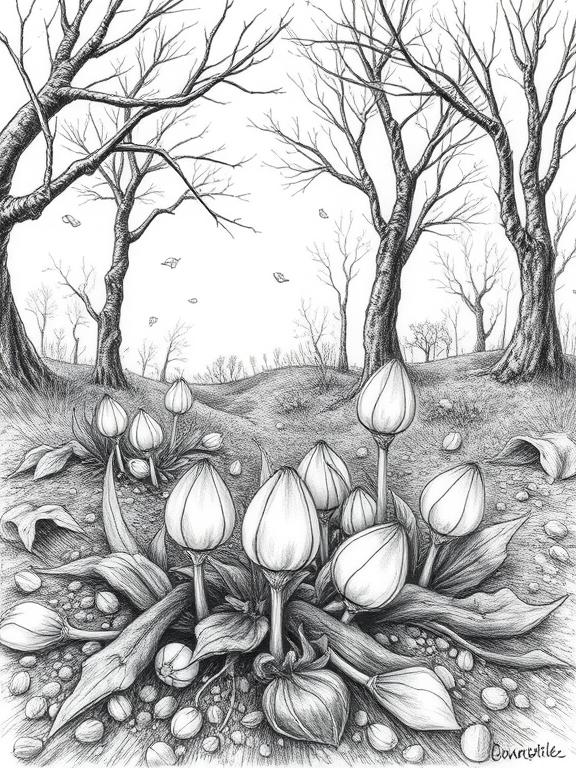
Autumn’s Graceful Decline
Fall gardens offer lessons in elegant aging and graceful transitions. As growing seasons wind down, gardens reveal their underlying structures. Seed heads replace flowers, creating interesting architectural forms.
Colors shift from bright greens to warm golds and deep reds. This seasonal art celebrates natural cycles while providing rich subject matter for illustration work.
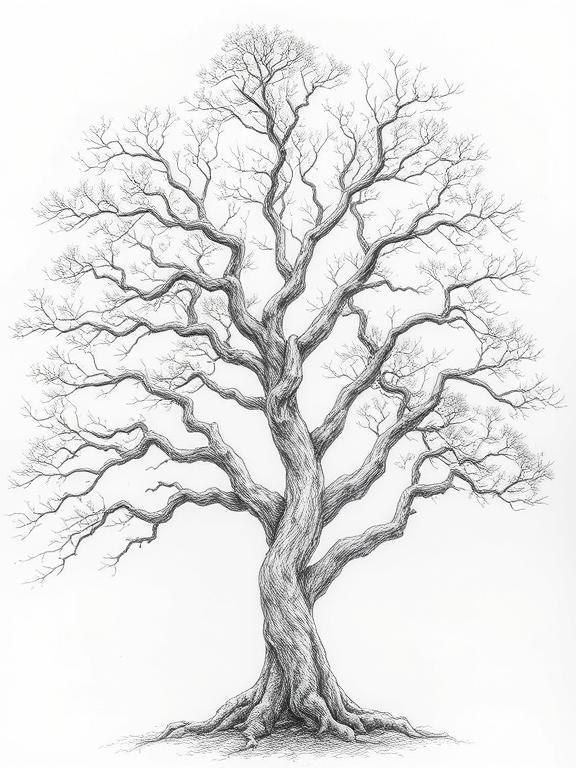
My Personal Garden Sketching Journey
Looking back through my sketchbooks from this past year, I’m amazed at how garden sketch drawing has changed my daily routine and perspective. I used to rush through outdoor spaces, maybe noticing if flowers looked pretty but never really seeing the incredible complexity and beauty happening everywhere.
Now I find myself scheduling morning coffee breaks specifically to catch certain lighting conditions, or staying outside longer just to watch how shadows move across garden beds.
My garden ideas drawing collection has become a personal journal of place and time, documenting not just what I’ve seen but how I’ve learned to see.
Whether it’s kids discovering art through nature or adult artists seeking fresh inspiration, gardens offer endless opportunities for creative growth and peaceful practice right outside our doors.
